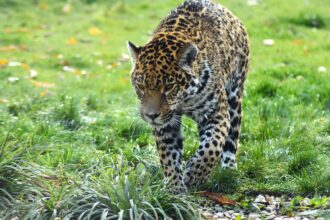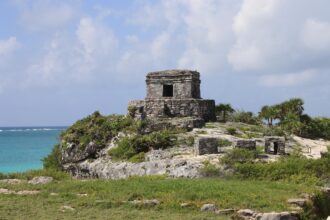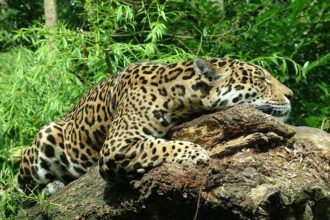Jaguar Safety Education in Tulum’s Communities: Bridging Cultures
Understanding the Importance of Jaguars in Tulum
Jaguars (Panthera onca) play a critical role in the ecological balance of the Yucatán Peninsula, particularly in Tulum. As apex predators, they help manage populations of various species, ensuring healthy ecosystems. In addition to their environmental role, jaguars hold significant cultural and spiritual value for the indigenous communities of the region. Understanding this cultural connection is essential for fostering respect and collaboration between conservationists and local residents.
The Cultural Significance of Jaguars
Historically, jaguars have been symbols of power and strength in Mayan mythology. They represent the underworld and are often associated with the goddess of war, representing ferocity and protection. These powerful animals are not just seen as wildlife; they embody the spirit of the land and carry the mythos of ancestral traditions. This rich cultural backdrop lays the groundwork for why educating communities about jaguar safety is crucial.
The Need for Jaguar Safety Education
As Tulum experiences rapid development, the intersection of human activity and jaguar habitat is becoming increasingly fraught with challenges. Encroachment on natural habitats leads to human-wildlife conflicts, which can have fatal consequences for both jaguars and local citizens. Educating communities about safety protocols and conservation practices is paramount to maintaining ecological integrity and fostering coexistence.
Engaging Local Communities
The first step in jaguar safety education is engaging local communities through workshops and educational programs. Collaborating with local leaders, NGOs, and educators facilitates grassroots support for conservation initiatives. Tailoring educational materials to local languages and cultural contexts helps resonate with community members, making the information more relatable and powerful.
Workshops and Outreach Programs
Innovative workshops designed to teach community members about jaguar behavior, ecology, and safety protocols are essential. Participants can learn how to recognize jaguar habitats, tracks, and signs of presence. It is also vital to provide information on best practices to minimize potential conflicts with these majestic creatures, such as securing livestock and avoiding encounters during mating seasons.
Creating Educational Materials
The development of educational materials in multiple formats—such as pamphlets, posters, and digital content—can cater to various learning preferences within communities. Utilizing vibrant visuals and stories that highlight the importance of jaguars in their cultural context can further engage community members. Comics, infographics, and videos are effective in conveying the intricate balance of the ecosystem involving jaguars and their prey.
School Involvement for Future Generations
Integrating jaguar safety education into local school curriculums is an effective strategy for ensuring the next generation understands the importance of conservation. By incorporating lessons about local wildlife, cultural heritage, and the role of the jaguar in the ecosystem, educators can foster a sense of pride and responsibility among students. Engaging children in activities such as field trips to natural reserves will deepen their connection to the land and its inhabitants.
Collaborating with Wildlife Organizations
Partnerships with conservation organizations specialized in jaguar protection can bolster local efforts. Organizations often have extensive experience, resources, and networks that can facilitate impactful education campaigns. Workshops led by wildlife experts can provide residents with comprehensive insights into the behaviors and needs of jaguars, aiding in building respect and understanding.
Utilizing Technology for Awareness
In the modern age, utilizing technology to spread awareness about jaguar safety can amplify educational efforts. Social media platforms and community blogs can disseminate important information rapidly, keeping locals informed about conservation efforts, safety protocols, and updates on jaguar populations. Collaboration with local influencers and community leaders through these channels can encourage broader engagement with conservation efforts.
Monitoring and Reporting Systems
Emma’s hand, tiger, or jaguar? Implementing monitoring and reporting systems to track jaguar sightings and incidents in the community helps local residents feel involved in conservation efforts. These systems can be simple, such as a community calendar or a digital app, where people can communicate their sightings and concerns. Regular updates can keep communities engaged and promote safety awareness.
Economic Incentives through Eco-Tourism
Integrating conservation efforts with eco-tourism can provide economic incentives to local communities. Educating them on how a thriving jaguar population can attract tourists can motivate residents to protect these animals. Many visitors seek authentic experiences in nature, and offering guided tours that emphasize jaguar conservation can create a sustainable revenue stream. This can reduce poaching and habitat destruction while preserving cultural heritage.
Community-Led Initiatives
Empowering local communities to lead conservation initiatives fosters a sense of ownership and responsibility for the environment. Creating community-led patrols or monitoring groups can help safeguard jaguar habitats and deter illegal activities such as poaching. This empowerment leads to greater accountability and a shared commitment to preserving the natural landscape.
Culturally Relevant Communication Techniques
Using culturally relevant communication techniques enhances the effectiveness of education campaigns. Storytelling, a powerful tool in many indigenous cultures, can convey complex ecological concepts in an engaging manner. Traditional storytelling practices can be adapted to include lessons on jaguar safety and conservation, making them memorable and impactful for community members.
Building Stronger Relationships through Dialogue
Establishing a continuous dialogue between conservationists and community leaders is vital for successful jaguar safety education. Regular forums and community meetings can open lines of communication, allowing both parties to discuss needs, challenges, and solutions. This relationship-building fosters trust, collaboration, and mutual respect.
Conclusion
Bridging cultures through jaguar safety education in Tulum’s communities presents a unique opportunity for collaboration between conservationists and local residents. By merging ecological knowledge with cultural practices, effective educational strategies can be developed that honor the region’s rich heritage while ensuring the safety and preservation of this iconic species. Through community involvement, technology, education, and partnerships, it is possible to create a sustainable future where jaguars can thrive alongside the vibrant cultures of Tulum.







